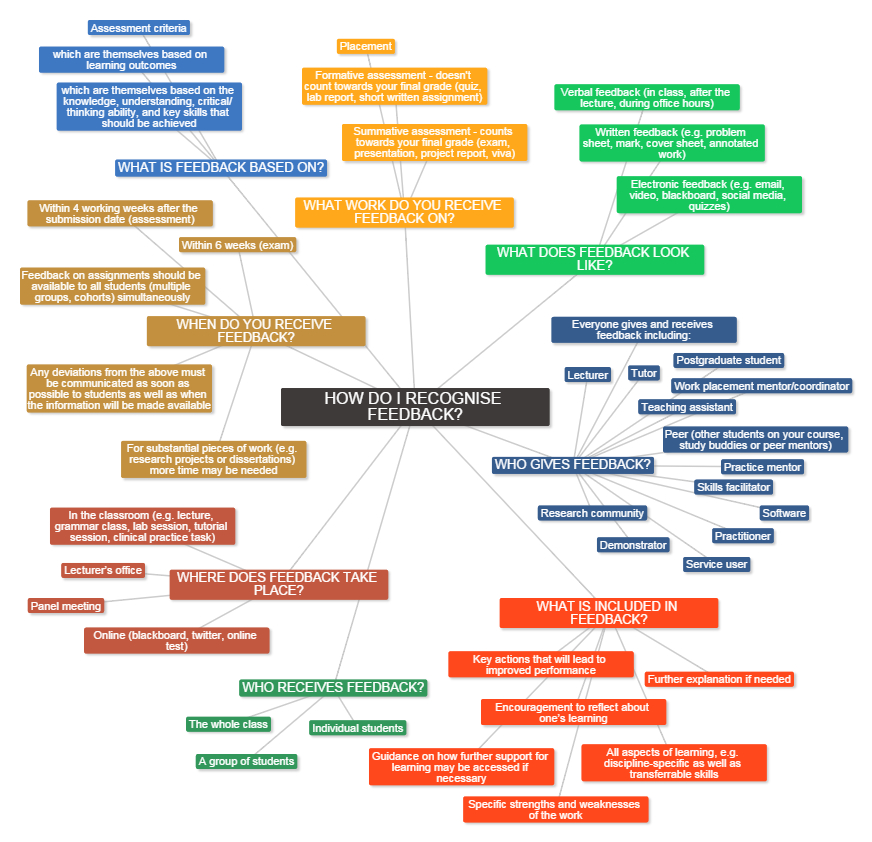Feedback: what’s it all about?
Feedback is what universities talk about all the time. What is it? What is it for? And how are you supposed to use it? The following ‘Draw my life’ video tries to answer these questions:
As a student, you receive feedback all the time. It should help you identify your own strengths and weaknesses, and suggest ways to improve your work. Each piece of feedback is important and deserves your attention. So don’t ignore it! It is your responsibility as a student to act on it and make the most of it to get the grades you’re aiming for. The Feedback Toolbox should help you do just that:
How do I recognise feedback?
Feedback can take many forms but is not always recognised as such, especially when there is no assessment associated with it. Feedback can be formal (e.g. scheduled appointment with lecturer, written feedback on assignment) or informal (e.g. peer feedback, chat with a lecturer at the end of a class, lecturer’s tweet) but in both cases, the content of the feedback is equally valuable. There are many ways that you can get feedback which will help you with your learning. Here are just a few examples:
How do I act on feedback?
Once you have received some feedback, don’t throw it in the bin or file it at the bottom of a drawer! Read it carefully. If it doesn’t make sense, don’t hesitate to ask your tutor for clarification. Once you know exactly what it means, identify the main points and ask yourself: Is it the first time I get this feedback? Is it a recurrent problem? What have I done about it before and what am I going to do now to improve my work?
It may be useful for you to keep all of your feedback together as it might help you recognise common issues. It might also help you see how you have progressed over time by addressing these problems and how you will be able to carry on improving if you address issues highlighted in the feedback.
What does good feedback look like?
A few years ago, the National Union of Students (NUS) asked students, Course Reps and students’ unions officers nationally what good feedback meant to them, what they wanted and felt that they should reasonably expect in terms of feedback. They came up with the following Ten Feedback Principles:
|
|
Find out more about the NUS Ten Feedback Principles at http://www.nus.org.uk/cy/advice/course-reps/feedback-what-you-can-expect-/
If you feel that the feedback you receive doesn’t follow these principles, start a dialogue with either your course rep or your personal tutor. However, it could also mean that you are not always able to recognise feedback and therefore miss the opportunity to act on and make the most of it.
//



